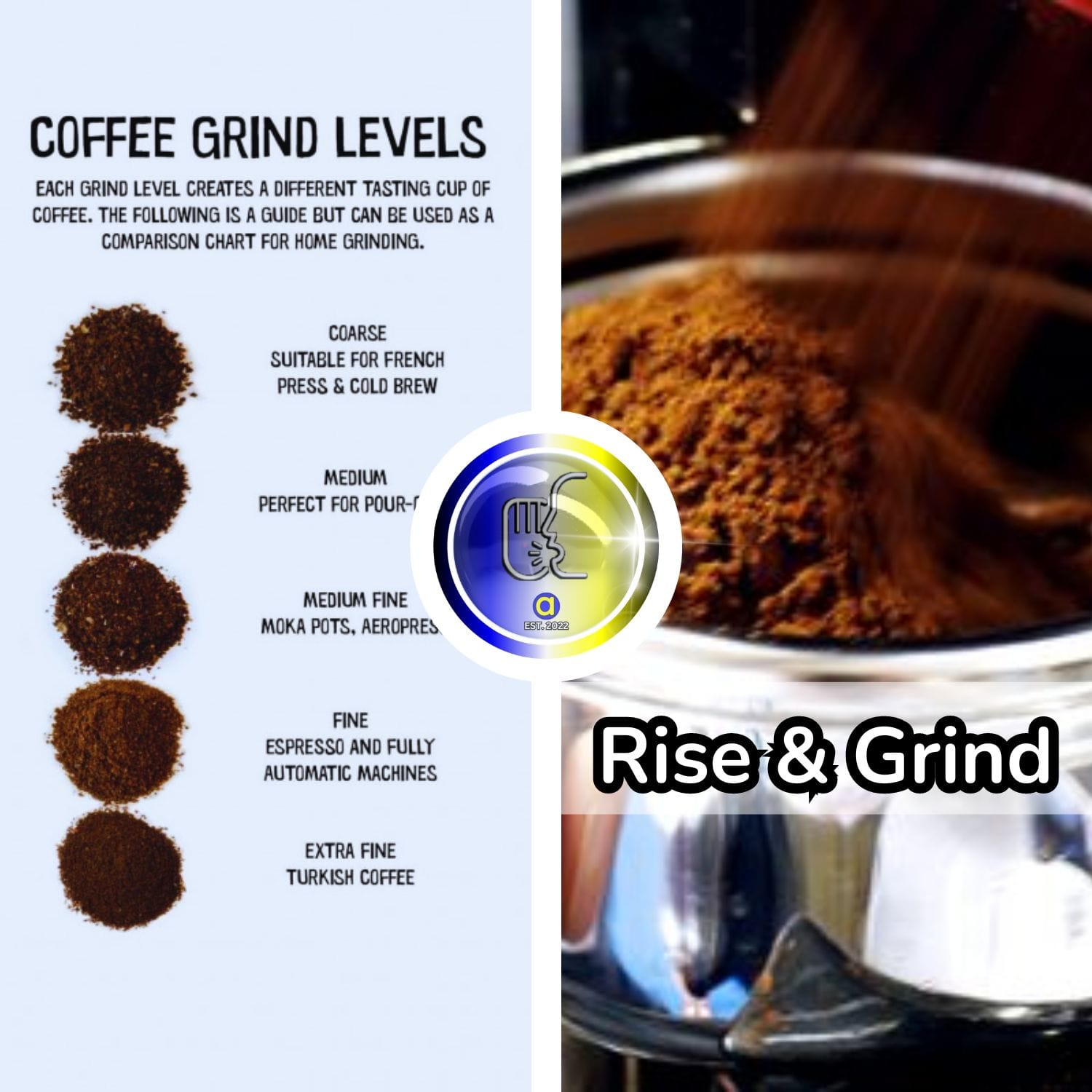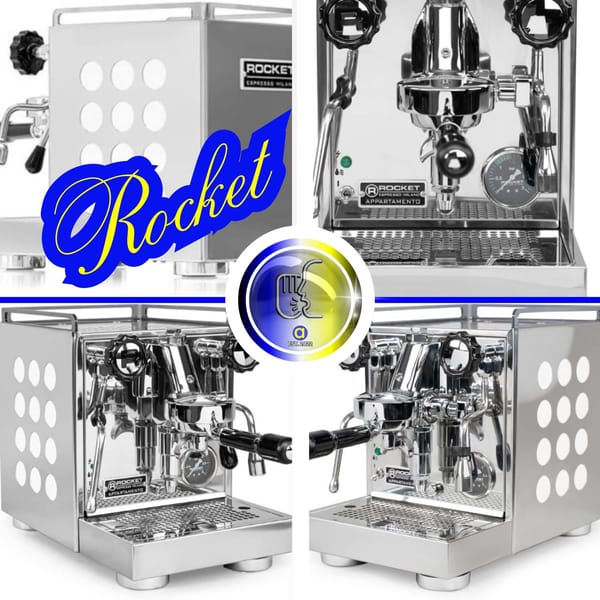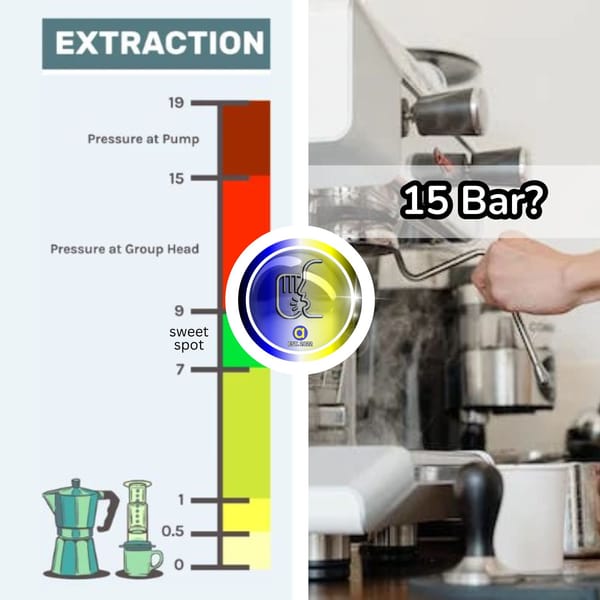Espresso is a brewing method that has captivated coffee aficionados worldwide with its rich, bold flavor and creamy texture. The secret to a perfect espresso shot lies not only in the quality of the coffee beans but also in the grind size of those beans. Understanding what is the best grind for an espresso machine is essential for anyone looking to master the art of espresso brewing.
The Importance of Grind Size in Espresso Brewing
The grind size of coffee beans is a critical factor in the brewing process, especially for espresso. Espresso machines require a very fine grind, finer than what is used for most other coffee brewing methods. This fine grind is necessary because espresso is brewed under high pressure, and the water passes through the coffee grounds quickly. A fine grind ensures that the water can extract the coffee's flavors and oils efficiently, resulting in a full-bodied and aromatic shot of espresso.
Fine Grind: The Ideal Choice for Espresso
When brewing espresso, a fine grind is paramount. This grind size resembles table salt or powdered sugar, allowing for the optimal resistance against the pressurized water in an espresso machine. The fine grind ensures that the water is in contact with the coffee just long enough to extract the right amount of flavor without over-extracting, which can lead to a bitter taste.
Burr Grinders vs. Blade Grinders
For achieving the perfect fine grind, burr grinders are the gold standard. Unlike blade grinders, which chop the beans inconsistently, burr grinders crush the beans between two burrs to produce uniform coffee grinds. This consistency is crucial for espresso, as uneven grinds can lead to under-extracted coffee, where the water channels through the larger pieces, or over-extraction, where the water takes too long to pass through the finer grinds.
The Role of Coffee Freshness
Freshly ground coffee beans are another essential component of a great espresso. Grinding coffee beans exposes more surface area to air, leading to a faster loss of flavor and aroma. Therefore, grinding coffee beans right before brewing is recommended to ensure the freshest, most flavorful espresso shot.
Understanding the Coffee Grind Chart
A coffee grind chart is a valuable tool for any coffee enthusiast. It visually represents the different grind sizes required for various coffee brewing methods, from the coarse grind needed for French press coffee to the extra fine grind used for Turkish coffee. For espresso, the chart will indicate a fine grind, which is crucial for the espresso brewing process.

Espresso Grind Size: A Closer Look
The espresso grind size is unique and specific. It's not just about being fine; it's about being consistently fine. The grind should feel like fine beach sand, not too powdery, yet not too coarse. If the grind is too coarse, the espresso will be under-extracted, weak, and lack crema. If it's too fine, it can lead to over-extraction, making the espresso taste bitter and burnt.
Adjusting Grind Size for Tasting Coffee
Tasting coffee, or cupping, is an essential practice for determining the right grind size for espresso. By tasting coffee brewed with different grind sizes, one can identify the grind that produces the best flavor balance. If the espresso tastes sour or watery, the grind may be too coarse. If it's overly bitter, the grind is likely too fine. Adjusting the grind size in small increments can lead to the perfect espresso shot.
The Impact of Coffee Bean Type on Grind Size
Different types of coffee beans, such as a light roast versus a dark roast, may require slight adjustments in grind size. Dark roast beans are typically more brittle and may need a slightly coarser grind to prevent over-extraction. Conversely, lighter roasts, being denser, might benefit from a finer grind to ensure adequate flavor extraction during the espresso brewing process.

The Versatility of Medium Grinds in Brewing Coffee
Medium grind coffee beans are the jack-of-all-trades in the coffee world, offering a balance between surface area and extraction time that suits a variety of brewing methods. This grind size resembles the consistency of sand and is particularly well-suited for drip coffee makers, where the water flows through the grind without the intense pressure of an espresso machine. The medium grind allows for a steady extraction that can yield a full-flavored cup without the bitterness that might come from over-extraction.
In contrast to the very finely ground coffee needed for espresso, medium grinds are more forgiving and versatile. They are an excellent choice for those who enjoy experimenting with different brewing methods but do not wish to buy pre-ground coffee or invest in multiple coffee grinders. A medium grind can produce a satisfying cup whether you're using a classic drip brewer, a pour-over setup, or even trying your hand at a cold brew, which typically requires a coarser grind but can be adapted to use a medium grind for a faster extraction process.
The Evolution of Coffee Grinder Technology In the realm of espresso preparation, the coffee grinder has undergone significant technological advancements. Initially, manual grinders were the norm, requiring physical effort to achieve the desired grind size. However, the advent of electric grinders has revolutionized the process, offering precision and consistency with minimal effort. The latest models boast features such as programmable settings, which allow users to replicate the perfect grind every time. This evolution underscores the importance of investing in a quality grinder to ensure the finest espresso experience.
The market now offers a plethora of options, from basic blade grinders to sophisticated burr grinders that provide a uniform medium fine coffee grind essential for espresso. Blade grinders, while more affordable, often produce inconsistent grinds, which can lead to uneven extraction and a subpar espresso shot. On the other hand, burr grinders, with their adjustable settings, are the preferred choice for coffee aficionados and baristas alike. They ensure that each coffee particle is of a consistent size, contributing to a balanced and flavorful espresso.
Pre-Ground Coffee vs. Freshly Ground: A Comparative Analysis For many coffee enthusiasts, the convenience of opting to buy pre-ground coffee is tempting. Pre-ground coffee can save time and eliminate the need for a coffee grinder altogether. However, this convenience comes at a cost to flavor and aroma. Pre-ground coffee begins to lose its freshness and essential oils shortly after grinding, leading to a less vibrant espresso shot. The oxidation process diminishes the coffee's complexity and can result in a flat taste.
Conversely, grinding coffee beans immediately before brewing with an espresso machine can significantly enhance the coffee's flavor profile. A medium fine coffee grind freshly prepared allows for optimal extraction of the coffee's oils and aromatic compounds. This freshness translates into a more robust and nuanced espresso, with a depth of flavor that pre-ground coffee simply cannot match. For those seeking the pinnacle of espresso quality, investing in a reliable coffee grinder and whole beans is the clear choice.

Exploring Coffee Grind Sizes for Optimal Flavor Extraction
The coffee grind size chart is an essential tool for any coffee aficionado looking to master the art of brewing. It visually represents the spectrum of coffee grind sizes, from extra fine Turkish coffee to the coarse grind used in French press brewing. Understanding this chart is crucial when aiming to avoid under extracted coffee, which can occur when the grind is too coarse, leading to a weak and sour cup. Conversely, an overly fine grind can result in over-extraction, producing a bitter and astringent brew.
Fine ground coffee is the hallmark of a quality espresso, but achieving the perfect grind requires precision. The goal is to reach a particle size that allows for the optimal resistance to water pressure, ensuring a rich and creamy extraction. Coffee enthusiasts often debate whether to grind coffee beans at home or to buy pre-ground coffee. While pre-ground coffee offers convenience, grinding beans just before brewing ensures the freshest flavor and allows for fine-tuning the grind size to match the brewing method and personal taste preferences.
The Science Behind Espresso Extraction
Espresso extraction is a delicate balance of grind size, water temperature, and pressure. The fine grind of espresso coffee creates resistance to the pressurized water, leading to a concentrated and flavorful shot. The extraction process should take about 25-30 seconds for a standard shot, and the grind size is key to hitting this time frame.
The Relationship Between Grind Size and Extraction Time
The extraction time in espresso brewing is directly related to the grind size. A finer grind will slow down the water flow, increasing the contact time and potentially leading to over-extraction. A coarser grind will do the opposite, possibly resulting in a quick, under-extracted shot. Finding the right grind size helps achieve the sweet spot in extraction time, yielding a balanced and delicious espresso.

How to Dial in the Perfect Espresso Grind
Dialing in the grind for espresso involves making small adjustments to the grind size and testing the results. Start with a recommended espresso grind setting on a burr grinder and pull a shot. If the shot pulls too quickly, adjust the grinder to a finer setting. If it pulls too slowly, go a bit coarser. Repeat this process until the espresso shot is balanced in flavor and has a good flow rate.
The Role of Espresso Machines in Grind Selection
Espresso machines, whether manual or automatic, play a significant role in determining the best grind for espresso. The machine's pressure and temperature settings can affect how the water interacts with the coffee grounds, and thus, the grind size may need to be adjusted accordingly to achieve the best results.

Manual vs. Automatic Espresso Machines
Manual espresso machines often require a finer grind compared to automatic machines, as the barista has more control over the tamping and extraction process. Automatic machines, on the other hand, can sometimes be more forgiving with grind size due to their preset brewing parameters. However, the fine grind is still a fundamental requirement for any espresso machine type.
The Importance of Consistent Grind for Espresso Consistency
Consistency in grind size is crucial for consistent espresso shots. Variations in grind size can lead to inconsistent extraction and an unpredictable espresso experience. A high-quality burr grinder is an investment that pays off by providing the consistent grind needed for reliable espresso brewing.32
Practical Tips for Grinding Coffee Beans for Espresso
When grinding coffee beans for espresso, always aim for a fine, consistent grind. Use a burr grinder for the best results, and never buy pre-ground coffee, as it will likely have lost much of its flavor by the time you use it. Instead, invest in good quality, freshly roasted beans and grind them just before brewing.
The Dos and Don'ts of Espresso Grinding
Do clean your grinder regularly to ensure no old coffee grinds are affecting the flavor of your espresso. Don't use a blade grinder, as it will give you an uneven grind. Do experiment with slight adjustments to find the perfect grind for your espresso machine and palate.
Case Study: The Impact of Grind on Espresso Quality
A study conducted by a specialty coffee shop found that by adjusting their espresso grind size by just a few microns, they could significantly improve the taste and consistency of their espresso shots. This highlights the importance of fine-tuning the grind for the best espresso experience.
Summary
In summary, the best grind for an espresso machine is a fine grind that resembles table salt in texture. Burr grinders are the preferred tool for achieving this consistent fine grind, and freshly ground coffee beans are essential for the freshest taste. Understanding the coffee grind chart, adjusting the grind size based on tasting, and considering the type of coffee bean are all important factors in creating the perfect espresso shot. Consistency in grind size is key to consistent espresso quality, and practical grinding tips can help any barista improve their espresso brewing.

FAQ Section
Q: Can I use pre-ground coffee for espresso?
A: While you can use pre-ground coffee, it's not recommended for the best espresso experience. Pre-ground coffee may have lost its freshness and flavor, leading to a subpar shot. For optimal results, grind fresh coffee beans just before brewing.
Q: How do I know if my espresso grind is too fine or too coarse?
A: If your espresso shot pulls too quickly and tastes weak or sour, the grind is likely too coarse. If the shot takes too long and tastes bitter, the grind is too fine. Adjust the grind size incrementally and test until you achieve a balanced shot.
Q: Why is a burr grinder better than a blade grinder for espresso?
A: A burr grinder provides a consistent fine grind necessary for espresso, while a blade grinder produces uneven grinds that can lead to inconsistent extraction and an unpredictable espresso shot. Consistency is key for the perfect espresso.
RELATED: Best Espresso Machines Under $200 for 2024







